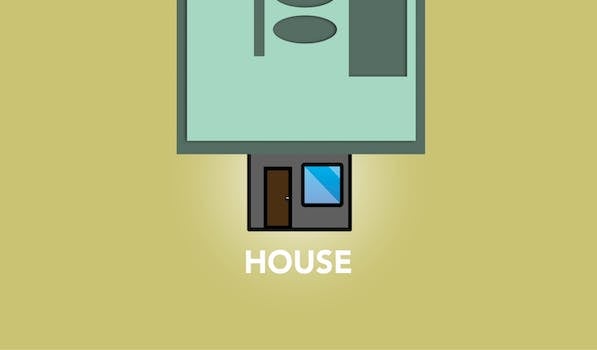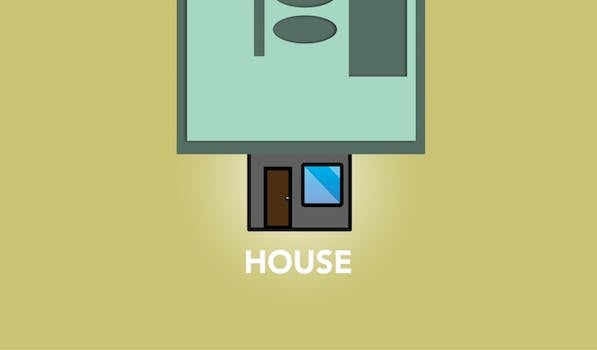How To Save Money Building A House
“Building your dream home on a budget: Tips and tricks for saving money during construction.”
Introduction
Building a house can be an expensive endeavor, but there are ways to save money without sacrificing quality. By carefully planning and making smart choices, you can build your dream home while staying within your budget. In this article, we will discuss some tips on how to save money when building a house.
Maximizing Your Budget: Tips for Saving Money on Building Materials
Building a house is a dream come true for many people. However, it can also be a costly endeavor. The good news is that there are ways to save money on building materials without compromising on quality. In this article, we will share some tips on how to maximize your budget and save money when building a house.
1. Plan ahead
The first step to saving money on building materials is to plan ahead. This means creating a detailed budget and sticking to it. You should also research the cost of materials and compare prices from different suppliers. This will help you identify the best deals and avoid overspending.
2. Buy in bulk
Buying materials in bulk is another way to save money. Many suppliers offer discounts for bulk purchases, so it’s worth considering if you need a large quantity of a particular material. However, be sure to only buy what you need, as excess materials can end up costing you more in the long run.
3. Consider alternative materials
Traditional building materials such as brick and concrete can be expensive. Consider using alternative materials such as timber or steel, which can be more cost-effective. These materials are also lightweight and easy to work with, making them a popular choice for many builders.
4. Shop around
Don’t settle for the first supplier you come across. Shop around and compare prices from different suppliers. You may be surprised at the price differences between suppliers for the same materials. Be sure to also check online retailers, as they may offer better deals than traditional brick-and-mortar stores.
5. Use recycled materials
Using recycled materials is not only environmentally friendly, but it can also save you money. Recycled materials such as timber, bricks, and tiles can be purchased at a fraction of the cost of new materials. You can also salvage materials from demolition sites or old buildings, which can add character and charm to your new home.
6. DIY
If you have the skills and experience, consider doing some of the work yourself. This can save you money on labor costs and allow you to have more control over the building process. However, be sure to only take on tasks that you are comfortable with and leave the more complex work to the professionals.
7. Negotiate
Don’t be afraid to negotiate with suppliers. Many suppliers are willing to offer discounts or price matching to win your business. Be sure to also ask about any promotions or sales that may be coming up, as this can save you even more money.
In conclusion, building a house can be expensive, but there are ways to save money on building materials without compromising on quality. By planning ahead, buying in bulk, considering alternative materials, shopping around, using recycled materials, DIY, and negotiating with suppliers, you can maximize your budget and build your dream home without breaking the bank.
DIY vs Hiring Professionals: Which Option Will Save You More Money?

Building a house is a dream come true for many people. However, it can also be a costly endeavor. One of the biggest decisions you’ll have to make when building a house is whether to do it yourself or hire professionals. Both options have their pros and cons, but which one will save you more money in the long run?
DIY
Doing it yourself can be a great way to save money when building a house. You’ll have complete control over the project and can make changes as you go along. You’ll also be able to save money on labor costs since you won’t have to pay anyone to do the work for you.
However, there are some downsides to DIY. Unless you’re a professional builder, you may not have the necessary skills and knowledge to complete the project to a high standard. This could lead to mistakes and costly repairs down the line. You’ll also need to invest in tools and equipment, which can add up quickly.
If you’re considering DIY, it’s important to be realistic about your abilities and the time and effort required to complete the project. You may need to take time off work or sacrifice your weekends to get the job done. You’ll also need to be prepared to deal with any setbacks or challenges that arise along the way.
Hiring Professionals
Hiring professionals to build your house can be a more expensive option, but it can also save you money in the long run. Professional builders have the skills and experience to complete the project to a high standard, which means fewer mistakes and less need for repairs down the line.
Professional builders also have access to the latest tools and equipment, which means they can complete the project more quickly and efficiently than you could on your own. This can save you money on labor costs and reduce the amount of time you need to take off work.
However, hiring professionals does come with some downsides. You’ll need to pay for their services, which can be a significant expense. You’ll also need to be prepared to relinquish some control over the project, as the builders will be making decisions on your behalf.
Choosing the Right Option
Ultimately, the decision to DIY or hire professionals will depend on your budget, skills, and preferences. If you have the necessary skills and experience, and are willing to invest the time and effort required, DIY can be a great way to save money. However, if you’re not confident in your abilities or don’t have the time to commit to the project, hiring professionals may be the better option.
If you do decide to hire professionals, it’s important to do your research and choose a reputable builder with a track record of success. Get quotes from multiple builders and compare their prices and services to find the best fit for your needs and budget.
Conclusion
Building a house is a major investment, and it’s important to choose the right option to save money. Whether you decide to DIY or hire professionals, it’s important to be realistic about your abilities and budget, and to do your research to find the best fit for your needs. With the right approach, you can build your dream home without breaking the bank.
Energy-Efficient Home Design: How to Save Money on Utilities in the Long Run
Building a house is a significant investment, and it’s essential to save money wherever possible. One way to do this is by designing an energy-efficient home that will save you money on utilities in the long run. Here are some tips on how to save money building a house by incorporating energy-efficient design.
Firstly, consider the orientation of your home. The orientation of your home can significantly impact its energy efficiency. Ideally, your home should be oriented to take advantage of natural light and heat. This means that your home should face south in the northern hemisphere and north in the southern hemisphere. This orientation will allow your home to receive maximum sunlight during the winter months, reducing the need for heating. Additionally, it will help keep your home cool during the summer months, reducing the need for air conditioning.
Secondly, consider the insulation of your home. Proper insulation is crucial to an energy-efficient home. Insulation helps to keep your home warm in the winter and cool in the summer, reducing the need for heating and air conditioning. When building your home, ensure that it is adequately insulated. This includes insulating the walls, roof, and floors. Additionally, consider using double-glazed windows, which are more energy-efficient than single-glazed windows.
Thirdly, consider the heating and cooling systems of your home. Heating and cooling systems are significant energy consumers in a home. When building your home, consider using a high-efficiency heating and cooling system. This will help to reduce your energy consumption and save you money on utilities in the long run. Additionally, consider using a programmable thermostat, which will allow you to control the temperature of your home more efficiently.
Fourthly, consider the lighting of your home. Lighting is another significant energy consumer in a home. When building your home, consider using energy-efficient lighting, such as LED lights. LED lights are more energy-efficient than traditional incandescent bulbs and can last up to 25 times longer. Additionally, consider using natural light wherever possible. This will help to reduce your energy consumption and save you money on utilities in the long run.
Lastly, consider the appliances of your home. Appliances are significant energy consumers in a home. When building your home, consider using energy-efficient appliances, such as refrigerators, dishwashers, and washing machines. Energy-efficient appliances use less energy than traditional appliances and can save you money on utilities in the long run. Additionally, consider using appliances that are appropriately sized for your needs. Oversized appliances use more energy than necessary and can increase your energy consumption.
In conclusion, building an energy-efficient home is an excellent way to save money on utilities in the long run. When building your home, consider the orientation, insulation, heating and cooling systems, lighting, and appliances. By incorporating energy-efficient design, you can reduce your energy consumption and save money on utilities in the long run. Building an energy-efficient home is not only good for your wallet but also good for the environment. So, go ahead and build your dream home while saving money and reducing your carbon footprint.
Negotiating with Contractors: Strategies for Lowering Building Costs
Building a house is a dream come true for many people. However, the cost of building a house can be overwhelming. Fortunately, there are ways to save money when building a house. One of the most effective ways to save money is by negotiating with contractors. In this article, we will discuss some strategies for negotiating with contractors to lower building costs.
The first strategy is to get multiple bids from different contractors. This will give you an idea of the average cost of building a house in your area. Once you have received multiple bids, you can compare them and negotiate with the contractors to get the best deal. It is important to remember that the lowest bid may not always be the best option. You should also consider the contractor’s experience, reputation, and references before making a decision.
The second strategy is to be flexible with your building plans. If you are willing to make some changes to your building plans, you may be able to save money. For example, you could choose a simpler design or use less expensive materials. You could also consider building a smaller house or eliminating some features that are not essential. By being flexible, you can work with the contractor to find ways to save money without sacrificing quality.
The third strategy is to negotiate the payment schedule. Many contractors require a large upfront payment before starting the project. However, you may be able to negotiate a payment schedule that works better for you. For example, you could agree to pay a smaller upfront payment and then make payments throughout the project as certain milestones are reached. This can help you manage your cash flow and avoid taking on too much debt.
The fourth strategy is to ask the contractor to use your materials. If you have already purchased some of the materials for your house, you may be able to save money by asking the contractor to use them. This can help you avoid paying markup fees on materials and can also ensure that you get the exact materials you want. However, it is important to make sure that the materials you have purchased are of good quality and are suitable for the project.
The fifth strategy is to be prepared to walk away. If you are not happy with the contractor’s bid or if you feel that they are not willing to negotiate, you should be prepared to walk away. There are many contractors out there, and you should not feel pressured to work with one that does not meet your needs. By being willing to walk away, you can find a contractor who is willing to work with you to save money.
In conclusion, negotiating with contractors is an effective way to save money when building a house. By getting multiple bids, being flexible with your building plans, negotiating the payment schedule, asking the contractor to use your materials, and being prepared to walk away, you can find ways to lower building costs without sacrificing quality. Building a house is a big investment, and it is important to find ways to save money wherever possible. With these strategies, you can make your dream of building a house a reality without breaking the bank.
Alternative Financing Options: Creative Ways to Fund Your Home Building Project
Building a house is a dream come true for many people. However, the cost of building a house can be overwhelming, and it’s not uncommon for people to give up on their dream because of financial constraints. But what if we told you that there are alternative financing options that can help you save money while building your dream home? In this article, we’ll explore some creative ways to fund your home building project and help you achieve your dream without breaking the bank.
One of the most popular alternative financing options is owner-builder financing. This option allows you to act as your own general contractor and oversee the construction of your home. By doing so, you can save money on the cost of labor and materials. However, it’s important to note that owner-builder financing requires a lot of time and effort, and you’ll need to have some construction knowledge to ensure that the project is completed successfully.
Another option is to consider a construction-to-permanent loan. This type of loan allows you to finance the construction of your home and then convert the loan into a traditional mortgage once the construction is complete. This option can save you money on interest rates and closing costs, as you only need to pay these fees once instead of twice.
If you’re looking for a more unconventional financing option, you may want to consider crowdfunding. Crowdfunding allows you to raise money from a large group of people who are interested in your project. This option can be particularly useful if you have a unique or innovative home building project that people are excited about. However, it’s important to note that crowdfunding can be time-consuming and may not be suitable for everyone.
Another creative way to fund your home building project is to consider bartering. Bartering involves exchanging goods or services instead of money. For example, you could offer to provide landscaping services for a contractor in exchange for their labor and materials. This option can be particularly useful if you have a skill or service that is in demand.
Finally, you may want to consider using a home equity loan or line of credit to finance your home building project. This option allows you to borrow against the equity in your existing home and use the funds to finance the construction of your new home. However, it’s important to note that this option can be risky, as you’re putting your existing home at risk if you’re unable to repay the loan.
In conclusion, building a house doesn’t have to be a financial burden. By exploring alternative financing options, you can save money and achieve your dream of building your own home. Whether you choose owner-builder financing, construction-to-permanent loans, crowdfunding, bartering, or home equity loans, it’s important to do your research and choose the option that’s right for you. With a little creativity and some hard work, you can make your dream home a reality without breaking the bank.
Conclusion
Conclusion: Building a house can be an expensive endeavor, but there are several ways to save money during the process. Some of these include creating a detailed budget, choosing cost-effective materials, and doing some of the work yourself. It’s important to prioritize your needs and wants and make smart decisions throughout the building process to ensure that you stay within your budget. With careful planning and research, building a house can be a rewarding and cost-effective experience.





